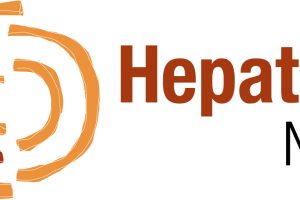By James Hamblin
John “Johnny Appleseed” Chapman stomped through the Midwestern winter snow with bare feet. His cloak was a lightly modified coffee sack with holes for his head and arms that—all of this according to a posthumous 1871 profilein Harper’s—he deemed “as good clothing as any man need wear.” He ate from buckets of pig slop, and when people welcomed Appleseed into their log homes, he would lie on the floor and deliver “news right fresh from heaven.” He claimed to have frequent conversations with angels, two of whom promised to marry him upon his death if he agreed to abstain from marriage during his Earthly existence, which he did manage.
But Appleseed was also wholly obsessed with planting trees for the benefit of future generations, so his legacy as an American folk hero is due.
In the current journal Environmental Pollution, forester Dave Nowak and colleagues found that trees prevented 850 human deaths and 670,000 cases of acute respiratory symptoms in 2010 alone. That was related to 17 tonnes of air pollution removed by trees and forests, which physically intercept particulate matter and absorb gasses through their leaves.
As you might recall from the June 1862 issue of The Atlantic Monthly, Henry David Thoreau wrote, “I cannot preserve my health and spirits unless I spend four hours a day at least—and it is commonly more than that—sauntering through the woods and over the hills and fields, absolutely free from all worldly engagements.”
Thoreau may have been less liberated than Appleseed, but that is still a lot of sauntering. It’s more time than most of us feel comfortable investing in sauntering. Luckily it’s also more than is necessary to benefit from the coddling of our wooden keepers, which are incessantly protecting us from disease by ameliorating the air pollution we heap onto them. I emailed lead researcher Nowak for comment on his new findings but received an out-of-the-office reply, perfectly.
The culmination of the research is the map below, delineating where trees are most protective. In general, the more trees are in an area, the more pollution those trees remove. But they also remove more pollution-per-tree in areas where population density is high, and the health value derived from pollution removal is highest in urban areas.
“In terms of impacts on human health, trees in urban areas are substantially more important than rural trees due to their proximity to people,” the researchers wrote. “The greatest monetary values are derived in areas with the greatest population density (e.g. Manhattan).” (Brooklyn trees are less concerned with monetary values and more with effortless authenticity.)
When the emerald ash borer began ravaging thousands of trees in the American Midwest, as Lindsay Abrams noted in The Atlantic last year, rates of human death from cardiovascular and respiratory illness increased. One studymonitored disease rates in 15 states from 1990 to 2007, where the borer was associated with 6,113 human deaths from illness of the respiratory system and 15,080 deaths from heart disease. And those medical outcomes don’t even include the known psychological merits of tree proximity. In one famous 1970s study of patients recently liberated of their gall bladders in a Pennsylvania hospital, those whose rooms had a view of trees recovered more quickly than those looking out at another building. Medical technology is far from developing any device that can help people recover from purposeful incisions to the abdomen just by looking at it.
Another medical study found that women recently diagnosed with breast cancer were better able to focus their attention if they spent two hours a week in natural environments, ostensibly because of stress mitigation.
Nowak, just as incapable of fully disconnecting as anyone, replied to me shortly after his automated response. “The takeaway is that trees have a huge impact on pollution,” he told me by phone, “and when populations increase, trees have a greater impact based on being close to where people live.”
“We need to start having this discussion,” Nowak said, referring to factors more quantifiable than did Thoreau, “about the impact of trees on human health.”
Before designing urban landscapes simply to optimize air-pollution removal, Nowak said, we’d do well to also consider other benefits of trees related to energy conservation, like changes in air temperature, water, and wildlife. “There are a whole bunch of other things to consider. We’re talking billions of dollars a year [in benefit] from urban forests. It adds up, if you look at the whole picture.”
Air pollution now kills around seven million people every year globally, according to the World Health Organization. Factoring in the other costs of air pollution—not just to human health, but building and material damage and crop losses—Nowak’s current study put the total annual value of pollution removal by U.S. trees at $86 billion.
Public-health researchers are to the point of suggesting people who live in high-pollution areas eat broccoli as a form of “chemoprevention” because it causes us to excrete benzene through our urine. The health argument for investing in trees, particularly of the urban variety, is even more staid. If you’ve ever scoffed at someone for calling a tree “majestic” or dismissed Johnny Appleseed as “just some crazy guy,” maybe it’s time to do some soul searching. And where’s this anger coming from? Not enough trees, probably.
This article was originally published in The Atlantic.





